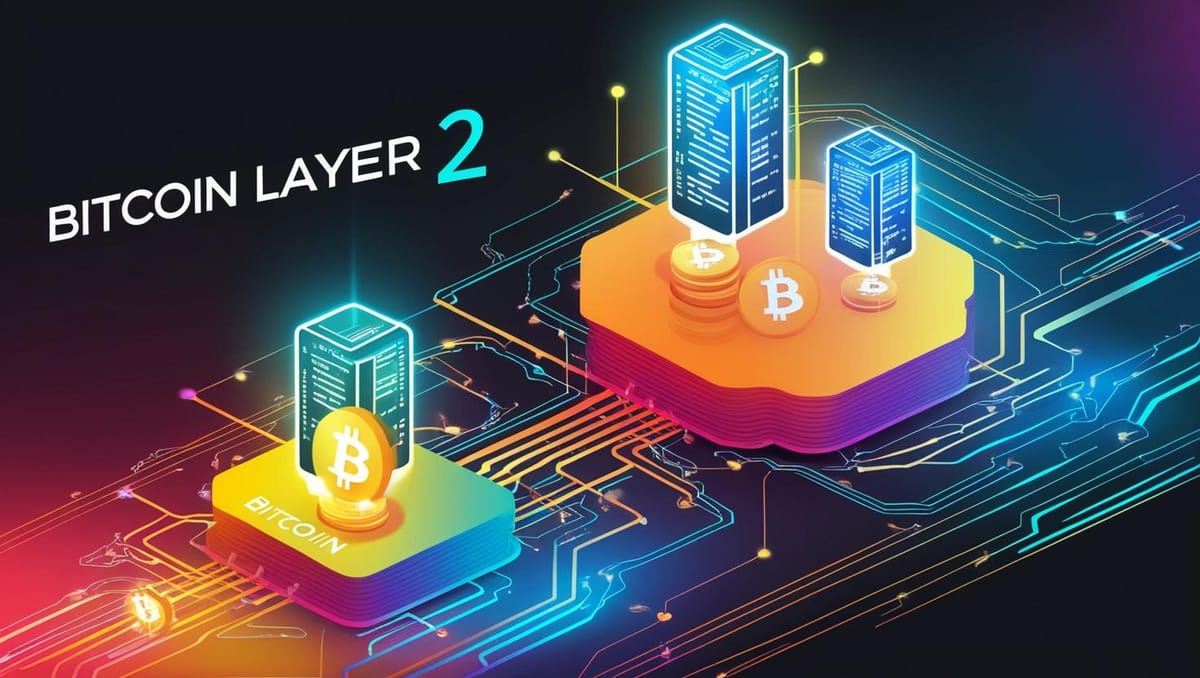Layer 2 Solutions on Bitcoin: Scaling the Network for the Future

Layer 2 Solutions on Bitcoin: Scaling the Network for the Future
Bitcoin, the world’s first cryptocurrency, revolutionized how value is transferred globally. However, as adoption grew, the Bitcoin network faced a significant challenge: scalability. With its limited transaction processing capacity of about 7 transactions per second (TPS), scaling became a pressing concern. Enter Layer 2 solutions — innovative protocols built on top of the Bitcoin blockchain to enhance its performance without compromising its core principles of decentralization and security.
What Are Layer 2 Solutions?
Layer 2 solutions are secondary frameworks or protocols that operate on top of the main blockchain (Layer 1). They aim to offload transactions from the main chain, reducing congestion and enabling faster and cheaper transactions. For Bitcoin, these solutions are crucial to maintaining its usability as a digital currency while addressing its scalability challenges.
Key Layer 2 Solutions on Bitcoin
- The Lightning Network The Lightning Network is the most prominent Layer 2 solution for Bitcoin. It allows users to create off-chain payment channels, enabling instant and low-cost transactions. Here’s how it works:Advantages:Challenges:
- Payment Channels: Users lock funds in a multi-signature wallet on the Bitcoin blockchain. They can then conduct multiple transactions off-chain using these funds.
- Final Settlement: Once the channel is closed, only the final state of the transactions is recorded on the main Bitcoin blockchain.
- Near-instant transactions
- Significantly reduced fees
- Enhanced privacy for users
- Requires user participation to open and close payment channels
- Liquidity constraints, as channels need to be pre-funded
- Statechains Statechains are a newer Layer 2 concept designed to transfer ownership of Bitcoin without requiring on-chain transactions. A statechain allows a user to transfer a private key associated with a specific Bitcoin output. This method eliminates the need to trust intermediaries and provides an innovative way to scale Bitcoin.Advantages:Challenges:
- Enables large-value transactions without congesting the main chain
- High scalability potential
- Still in experimental stages
- Security concerns need to be addressed for widespread adoption
- Sidechains Sidechains are independent blockchains connected to the Bitcoin network through a two-way peg. Users can transfer Bitcoin to a sidechain, use it for various applications (e.g., smart contracts), and then transfer it back to the main Bitcoin network.Examples:Advantages:Challenges:
- Liquid Network: A sidechain focusing on faster settlement for Bitcoin transactions, particularly for traders and exchanges.
- Rootstock (RSK): A sidechain enabling smart contract functionality on Bitcoin.
- Expands Bitcoin’s functionality beyond payments
- Maintains compatibility with the Bitcoin ecosystem
- Requires trust in the operators of the sidechain
- Higher complexity compared to on-chain transactions
Benefits of Layer 2 Solutions
- Enhanced Scalability: By moving transactions off-chain, Layer 2 solutions significantly increase the transaction capacity of the Bitcoin network.
- Lower Transaction Costs: Users benefit from reduced fees, making microtransactions and everyday payments viable.
- Improved Speed: Layer 2 solutions enable near-instant transactions, addressing Bitcoin's delay in block confirmations.
- Expanded Use Cases: Technologies like sidechains and the Lightning Network unlock new possibilities, such as decentralized applications (dApps) and smart contracts, within the Bitcoin ecosystem.
Challenges and Limitations
While Layer 2 solutions offer immense potential, they come with their own set of challenges:
- Complexity: These solutions often require technical expertise to set up and use.
- Centralization Risks: Some implementations, such as certain sidechains, may rely on trusted intermediaries, potentially compromising decentralization.
- Adoption: Layer 2 technologies require widespread user and merchant adoption to realize their full potential.
The Future of Layer 2 on Bitcoin
Layer 2 solutions are pivotal to Bitcoin's evolution as a global monetary network. As these technologies mature, they are likely to address existing challenges and drive mass adoption. Projects like the Lightning Network are already seeing increased usage, and innovations such as statechains and sidechains are expanding Bitcoin’s functionality.
With ongoing development and a growing focus on sustainability and usability, Layer 2 solutions will play a critical role in ensuring Bitcoin remains competitive in an evolving blockchain landscape. By scaling the network without compromising its core principles, these solutions ensure that Bitcoin continues to be a leading force in the decentralized economy.
This article presented by Loka Mining.
Loka is revolutionizing the Bitcoin mining ecosystem by directly connecting investors with Bitcoin miners through a decentralized mining pool and an upcoming permissionless forward hashrate marketplace protocol.
Loka enables investors to get Bitcoin at lower than market price without centralized & counter-party risks, and Bitcoin miners to access capital efficient financing and hedge their risk exposure by selling their future mining rewards.
Find out more about loka in https://lokamining.com — or access our mining pool aggregator on https://pool.lokamining.com





